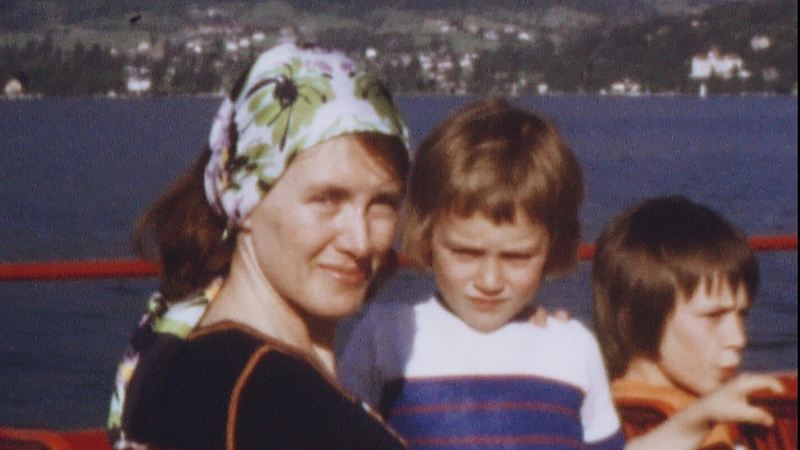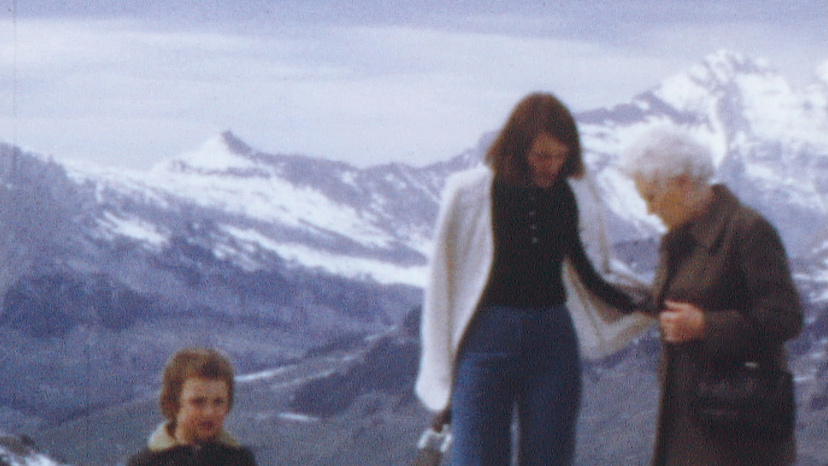The Super-8 Years
12AThere are very few things worse in life than having to sit down and feign interest in viewing someone else’s holiday pictures. With the advanced technology available to us today, it’s so much worse, with smartphones whipped out with a giddy eagerness, as they swipe through an unhealthy amount of unedited material from numerous picture albums stored on their phones.
An exception can be made for this film however, that fascinates on a number of levels.

This is so much fun and that but you promised we could go to McDonalds.
In 1972, a young French couple, Annie and Philippe Ernaux, decided to pick up a piece of equipment that was all the rage, a Super-8 camera.
They would use it to film their two children, as well as on the various trips they would take together over the years as a family, not fully aware of the process of filming them was having, documenting their lives together.

Now if you just stand there, on top of the hidden trap door...
The ability to record memories is such a readily accessible practice these days, it’s easy to take it for granted. But in the early seventies, using a Super-8 camera was seen as quite an elite activity.
Although Philippe shoots the majority of the family footage, it’s his then wife Annie who narrates throughout, over the top of images he shot without sound.
On the surface at least, it’s a collection of film shot over the years, which you would expect a young couple in their thirties with children to shoot; this includes them on various holidays, as well as seeing the development of their children over the years.
But it’s fair to say, they are not your average French couple. Philippe had a very good job, and Annie was exploring the idea of writing, which she did indeed follow up on, so much so that she was awarded a Nobel Prize in Literature in 2022.
Footage here sees them in exotic climes such as Chile, enjoying the energy on the streets of London, as well as visiting Russia, so hardly your average tourist destinations.
And with Annie’s narration, which although personal, is also quite esoteric and poetic, she creates a picture of her own in words, of a family slowly disintegrating. It’s quite telling that Annie and Philippe never actually share a frame together throughout the entire film.
Because of their bourgeoisie status, it’s not the type of film you can easily identify with, unless flying around the world was second nature to you too.
But considering the sheer amount of film shot over a period of nearly ten years, it serves as an intriguing memory map of a different time, with different attitudes. On one hand it captures the seventies on a broader scale, with some fascinating footage of locales featured, such as London’s Piccadilly. At the same time, you also get a more intimate portrayal of a young woman, wife and mother, during a time of her life with a lot going on.
Thankfully it serves as a curiously voyeuristic piece of cinema, despite the fact that you are indeed simply looking at someone else’s old holiday memories.
It’s a fascinating time capsule, reflecting not only a specific period in time, but the journey of a bright and engaging young woman through it.
That said, if you’re keen to shove your smartphone in our faces to deliver an exhaustive presentation of your two week family holiday in Magaluf, we’d still rather you didn’t.
